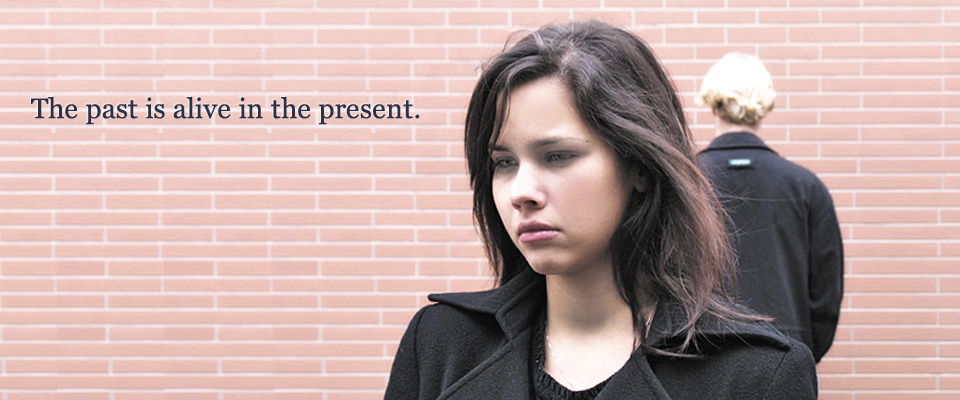 Psychoanalysis is a method of treatment that offers a way of understanding ourselves, our relationships and how we conduct ourselves in the world. Since its inception, psychoanalysis has had an enduring influence on modern society and culture.
Psychoanalysis is a method of treatment that offers a way of understanding ourselves, our relationships and how we conduct ourselves in the world. Since its inception, psychoanalysis has had an enduring influence on modern society and culture.
Listen to Dr. Hook’s audio on psychoanalysis:
Audio clip: Adobe Flash Player (version 9 or above) is required to play this audio clip. Download the latest version here. You also need to have JavaScript enabled in your browser.
Originally called the talking cure, psychoanalysis is the foundation of all the talk therapies. The theories on which analysis is based provide a framework for understanding and helping individuals with a wide variety of difficulties.
Psychoanalysis helps people learn how they became who they are and why they do and feel the things they do, paving the way towards the emotional freedom necessary to make substantive, lasting changes. It helps people recognize and manage their strengths and weaknesses, accept themselves and realize their fullest potential as human beings in a complex world.
Unconscious conflicts can create disharmony, unhappiness, and inhibition that may be expressed through difficulties in personality, relationships and work. Psychoanalytic treatment reveals how these unconscious forces are affecting current behavior. By fostering self awareness, it helps individuals to feel better about themselves and make healthier choices in life.
Analysts help their patients to uncover their life’s narrative. Destructive aspects of the story they tell themselves affect their present lives. By understanding their own story, and exploring the ways in which it limits them, they can they can change the way they see themselves and the world. They can make informed choices about the way they conduct their present and future lives.
Analysis is an intimate working partnership. In the course of psychoanalysis the patient becomes aware of the underlying sources of his or her difficulties (not simply intellectually, but emotionally) by re-experiencing them with the analyst in the safety of the analytic setting. This natural process (called transference) enables the patient to change his or her behavior, relationships, sense of self in deep and long-lasting ways.
The goal of the analysis of children and adolescents is the removal of the psychological roadblocks that interfere with normal development.
Psychoanalytic Traditions and Contributions
Sigmund Freud was the father of psychoanalysis. Many of his insights into the human mind, which seemed so revolutionary at the turn of the 20th century, are now widely accepted.
Freud saw that those who sought to change themselves encountered powerful obstacles in the dark and invisible forces of human nature. But he also showed us that psychological understanding and empathic curiosity about ourselves could enlarge the realm of reason and responsibility, and thereby alleviate individual suffering.
Psychoanalysis has helped countless people around the world to heal, change and grow. While psychoanalysis began as a tool for relieving emotional suffering, it is also a method for learning about the mind and a theory of human development.
Psychoanalysis provides insight into a range of human activity, both in the consulting room and in the world at large. In so doing, psychoanalysis continues to have a profound impact on many aspects of contemporary culture.
Who Can Benefit from Psychoanalysis?
Some people come to analysis because of repeated failures in work or in love, brought about not by chance but by self-destructive patterns of behavior. Others come because the way they are — their character — substantially limits their freedom and their pleasures. And still others seek analysis to definitively resolve psychological problems that were only temporarily or partially resolved by other forms of treatment.
One person may live a constricted life of isolation and loneliness, incapable of feeling close to anyone. Another may be plagued by private rituals or compulsions or repetitive thoughts about which no one else is aware. A victim of childhood abuse might suffer from an inability to trust others. One of the most common reasons for entering analysis is the problem of finding and maintaining a stable and loving relationship.
Psychoanalysis is especially suited to getting to the root of long-term problems and patterns (“I have difficulty in my personal relationships” or “I never excel at or feel satisfied in my work” or “I keep missing deadlines at work”) rather than immediate issues (“I just broke up with my boyfriend”).
A psychoanalyst can help people:
- Get relief from painful emotional problems
- Improve personal relationships
- Become more productive at work
- Take more pleasure from life
- Prevent the past from interfering in the present
- Stop self-destructive patterns of behavior
- Gain greater control over their life
- Unlock their creative potential
- Understand themselves
People from all walks of life, including business leaders, health-care professionals, teachers and mothers, have found that psychoanalysis has helped them greatly.
PART 2: Is Psychoanalysis Right for Me?
View the PDF brochure “What is Psychoanalysis?” by the American Psychoanalytic Association
This material was written by Gail M. Saltz, M.D., co-chair, Committee on Public Information.
Copyright © 2004, AMERICAN PSYCHOANALYTIC ASSOCIATION
website: www.apsa.org
email: This email address is being protected from spambots. You need JavaScript enabled to view it.
All rights reserved









